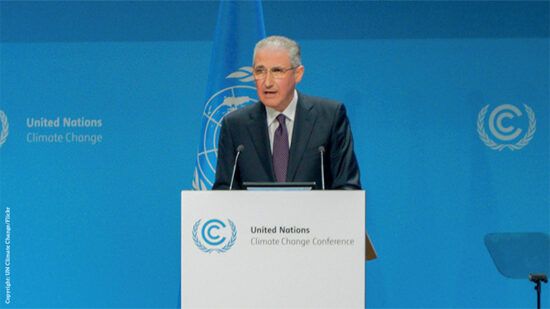The Net-Zero Asset Owner Alliance’s (NZAOA) fourth Target-Setting Protocol has gained unanimous approval from its membership, expanding coverage to include the majority of major asset classes across investment portfolios and reaffirming the alliance’s 2030 targets.
In its latest protocol – which has been streamlined into a document that will be updated as new methodologies evolve – the alliance also committed to launching a sovereign debt assessment pilot later this year to supplement carbon accounting with an additional step. Using a scorecard, asset owners should be able to assess governments’ climate-related commitments, policy frameworks and support for a just transition.
The NZAOA was convened by the United Nations in 2019 and boasts a membership with $9.5trn in assets under management. Under their commitment, members are targeting a 40-60% GHG emissions reduction by 2030 (compared to 2019), in line with IPCC Sixth Assessment Report estimates.
Günther Thallinger, board member of Allianz SE and alliance chair, said: “The fourth and most comprehensive Target-Setting Protocol has been approved by every alliance member as we continue to work towards a 1.5°C scenario. This unanimous endorsement underscores the strong commitment of all members to implement their net-zero targets in line with sound science. But we must close the widening gap between our ambitions and the real economy, which is lagging behind science.
“The alliance calls for an enabling policy environment – one that supports both investors and corporates in the transition to a low-carbon economy, in line with science and with due consideration of social impacts.”
Expanding asset coverage
The new protocol expands coverage to additional private assets, such as private debt funds, directly held private debt, directly held real estate debt funds and residential mortgage loans, covering all private assets to ensure that high-emitting companies develop transition plans regardless of their ownership structure.
Under the latest guidance, all members are required to set the next round of five-year targets, the so-called ‘2030 targets’, which will cover the period 2025 to 2030. Current member targets cover 2020 to 2025, with members expected to reach a GHG reduction of between 22% and 32%. This year, ahead of the Alliance Reporting Cycle, members are expected to set their second five-year target of between 40% and 60% GHG reduction, in line with Article 4.9 of the Paris Agreement.
However, according to the Alliance, increased climate scrutiny of large and publicly traded companies may push some actors to sell brown assets into the less transparent private market – a risk they said could only be mitigated with “a harmonised approach to listed and non-listed ownership structures”.
Sovereign debt assessment pilot
The protocol also addressed issues with sovereign debt, which find addressing emissions more challenging since sovereign debt emissions reflect a country’s emissions. The alliance, therefore, is seeking to gain a holistic understanding of climate alignment of countries whose sovereign debt asset owners hold through a scorecard pilot later this year.
Under the Assessing Sovereign Climate-related Opportunities and Risks (ASCOR) database, asset owners should be able to assess governments’ climate-related commitments, policy frameworks and support for a just transition, while also considering the stage of development of the country.
As part of the pilot phase of the scorecard, the Alliance said it would continue to explore the development of other secondary methodologies – such as setting boundary scores – that demarcate sovereign debt portfolios assessed to be climate-lagging, neutral or leading.
Background document
Additionally, the Alliance has released a Background Document, which reaffirms their positions on carbon removals, emissions attributions and transition plans.
Ahead of when the new protocol comes to term in 2030, members are told not to use carbon removals to achieve their decarbonisation targets and are encouraged to prioritise emissions reductions instead. Members should also contribute to a liquid and well-regulated carbon removal certificate market, as well as invest in projects and technologies of durable carbon avoidance and removal to rapidly scale future markets.








